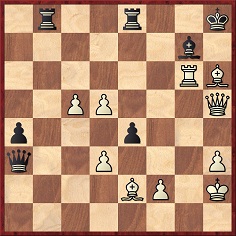
Edward Winter
It must be a considerable rarity for one player’s check to be immediately followed by the opponent’s checkmate. Offhand, only one such finish comes to mind, in the second Stevenson Memorial Tournament played in Southsea in April 1950, the game between E. Bogoljubow and A.H. Trott:
1 e4 c5 2 Ne2 Nc6 3 Nbc3 d6 4 g3 g6 5 Bg2 Bg7 6 d3 e6 7 Nf4 Nge7 8 O-O O-O 9 Re1 Rb8 10 Nce2 b5 11 c3 Qa5 12 a3 b4 13 Bd2 bxa3 14 Rxa3 Qb6 15 Bc1 Bd7 16 Ra2 Rfc8 17 g4 Na5 18 h3 Nb3 19 Be3 e5 20 Nd5 Nxd5 21 exd5 f5 22 gxf5 Bxf5 23 Ng3 Rf8 24 Kh2 Rb7 25 Rg1 Kh8 26 Ra3 Bd7 27 Ne4 a5 28 Bf3 Be8 29 Rg2 h6 30 Be2 a4 31 Qg1 Nd4 32 cxd4 Qxb2 33 dxc5 Qxa3 34 Nxd6 Rb8 35 Nxe8 Rfxe8 36 Rxg6 Rg8 37 Qg4 e4 38 Qh5 Rge8 39 Bxh6

39...Be5+ 40 Bf4 mate.
Source: Rising Stars (Southsea, 1950 tournament book), pages 48-49.
(151)
Since we no longer have the booklet, the scans below have been provided by the Cleveland Public Library:
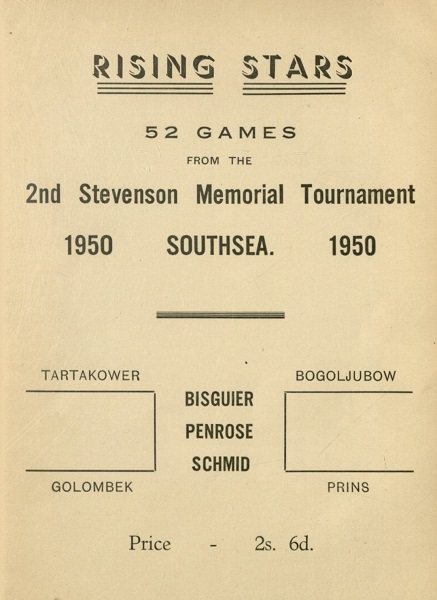

Trott is not a well-known name in chess history, and at our request John Townsend (Wokingham, England) has kindly provided a biographical note on him:
‘Arthur Henry Trott was born on 20 May 1930 in the registration district of Camberwell, the son of Richard Henry William Trott and his wife, Hilda (née Jackson) (source: General Register Office: index to births, June quarter 1930, Camberwell, Arthur Henry Trott, vol. 1d, page 1144, and index to deaths, 1987, Camden, Arthur Henry Trott, vol. 14, page 1874). His father was already 66. In some records, his father’s first two forenames were transposed.
The parish register of St Katharine’s, Rotherhithe shows that Trott’s parents were married there by banns on 17 March of the previous year, 1929: Henry Richard William Trott, a widower, a tinsmith, son of Henry Richard William Trott, a deceased ship worker, and Hilda Jackson, aged 31, a spinster, daughter of Arthur Jackson, a scale maker; the same address, 41 Cornbury Road, was given for both groom and bride.
Trott’s date of birth is confirmed by the 1939 England and Wales Register, when the family was living in the Camberwell area, at 3 Reynolds Road (Richard Henry William Trott, born 6 December 1863, “retired”, Hilda Trott, born 2 April 1898, “daily worker”, and Arthur Henry Trott, born 20 May 1930.
Trott lost his father in the first quarter of 1940 in the district of Camberwell (General Register Office: index to deaths, March quarter 1940, Camberwell, Richard H.W. Trott, vol. 1d, page 1435. The age given was 77, although both his birth registration in the first quarter of 1864 and the date of birth given in the 1939 Register indicate that he was 76).
A.H. Trott’s ability at chess first came to the attention of the press at the beginning of 1947, when the Hastings & St. Leonards Observer (25 January 1947, page 9) reported that in the London Boys’ Chess Championship at St Bride’s Institute, played in the week following Christmas week, he had won his section and qualified for a play-off with Oliver Penrose, of University College. In a report of this event on page 56 of the February 1947 BCM, he was referred to as “A.H. Trott, of Alleyn’s School”.
Perhaps his greatest chess success was his performance in the international tournament at Southsea in 1951, as a result of which he gained the Southern Counties Chess Championship.
On 28 August 1952, the South London Observer (page 5) gave his address as 48 Fenwick Road, Peckham, and he was still at that address, together with his mother, Hilda Trott, in the electoral register in 1958.
That same year, 1958, saw his marriage during the June quarter to Zarouhie S. Chopourian (General Register Office: index to marriages, June quarter 1958, Camberwell, Arthur Henry Trott, vol. 5c, page 278). According to her obituary in AMAA News, January/February 2001 (a publication of the Armenian Missionary Association of America), she was a native of “Adana, a prominent town of the Rupenian Armenian Kingdom of Cilicia”; her family became refugees in Cyprus; she became a nurse in Beirut and elsewhere, rising to matron, and, after marrying Trott, settled in England and adopted two children, Hilda and Peter, from Lebanon.
His marriage certificate shows that they were married by licence at the Camberwell Register Office on 3 April 1958. His occupation was chartered accountant, and his father was a bookseller (deceased). The bride was aged 37, a spinster, a state registered nurse, residing at the Craven Hill Hotel, 22a Craven Hill Gardens, London W2.
A.H. Trott died on 8 November 1987 at University College Hospital, Camden (General Register Office: deaths, 1987, Camden, Arthur Henry Trott, vol. 14, page 1874). His occupation was still chartered accountant, and his address was 445 George Williams House, Great Russell Street, London WC1. The cause of death was “Cardiac Rupture, Myocardial Infarction, Coronary Thrombosis”, certified by D.R. Chambers, Coroner for Greater London, after a post mortem, without an inquest. His age was 57.’
The Bogoljubow v Trott game is used, with colours reversed, in the 2023 animated short film War Is Over! directed by Dave Mullins and co-written by him and Sean Ono Lennon. We proposed the 1950 game to him when he requested an illustration of the theme of check followed by immediate checkmate.
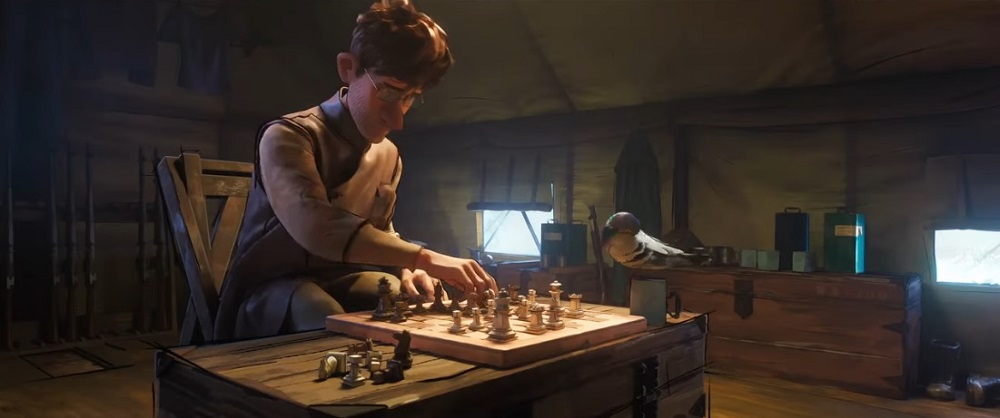
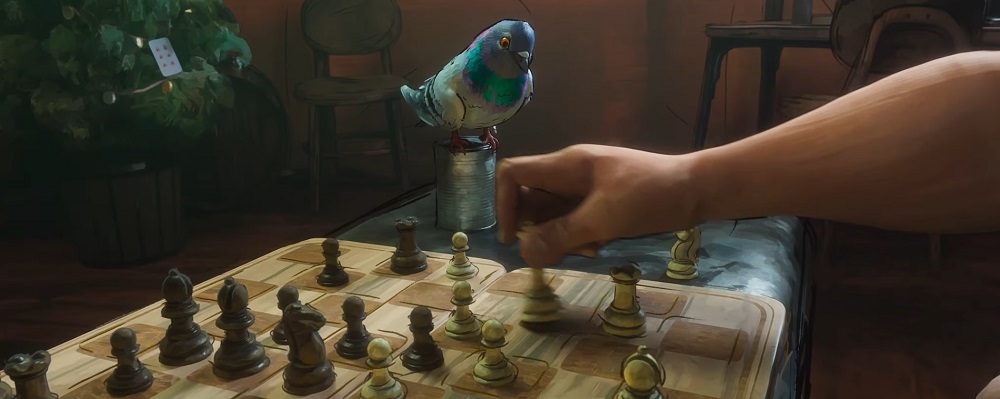
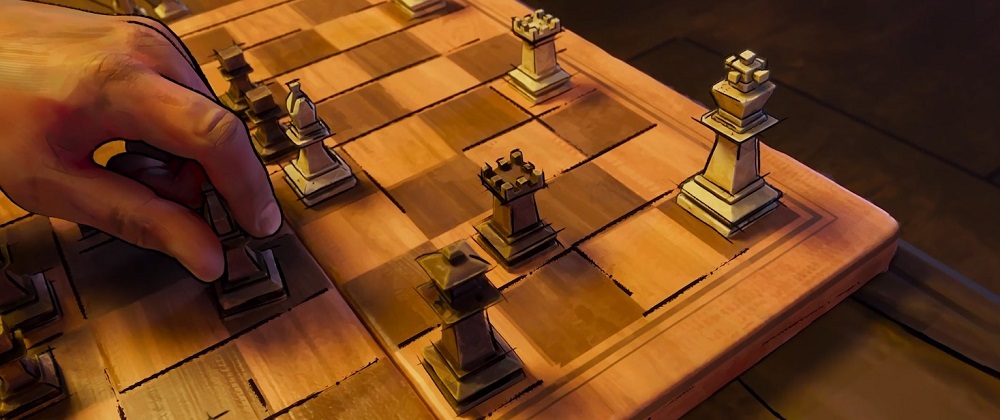
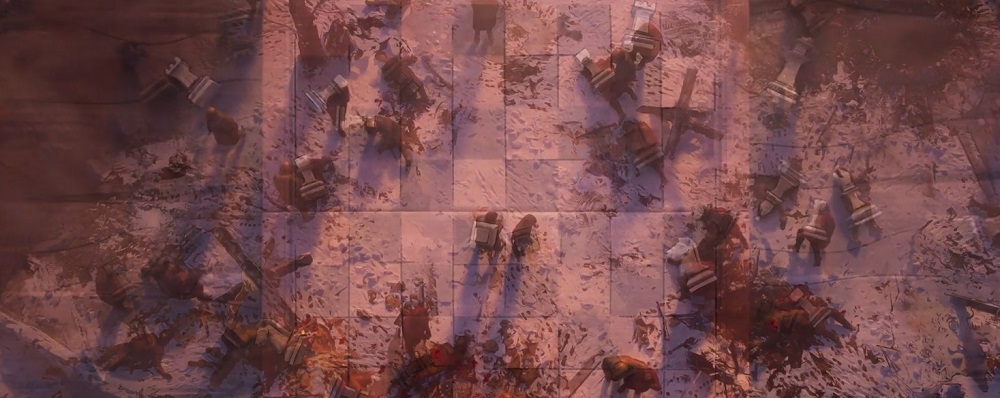
Stills from War Is Over! (made by us and reproduced with permission)
At the Academy Awards ceremony in Los Angeles on 10 March 2024, War Is Over! won the Oscar in the category ‘Best Animated Short Film’.
In a chess.com article dated 13 March 2024, Tarjei J. Svensen asserted that the present feature article revealed our ‘pivotal role as a consultant for the film’s chess scenes’. We have not made, and could not make, any such revelation or claim.
Sixten Johansson (Göteborg, Sweden) has found this brevity on pages 36-37 of Eero Böök’s entertaining book Odödliga partier och andra schackkåserier (Halmstad, 1966) – (Immortal games and other chess chats):
Eero Einar Böök – A. Hiidenheimo
Helsinki (junior tournament), 1924
Vienna Game
1 e4 e5 2 Nc3 Nf6 3 Bc4 Nxe4 4 Qh5 Ng5 5 d4 Ne6 6 d5 g6 7 dxe6 gxh5 8 exf7+ Ke7 9 Bg5+ Kd6 10 O-O-O+ Kc5 11 Rd5+ Kxc4 12 b3+ Kb4 13 Rb5+ Ka3 14 Nb1+ Kxa2 15 Ra5+
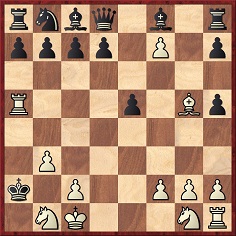
15...Ba3+ 16 Rxa3 mate.
(648)
A game from page 157 of the 15 July 1887 issue of the Brooklyn Chess Chronicle:
N.N. – van Foreest
Amsterdam, date?
King’s Gambit Accepted
1 e4 e5 2 f4 exf4 3 Nf3 g5 4 h4 g4 5 Ne5 Nf6 6 Bc4 d5 7 exd5 Bg7 8 d4 Nh5 9 c3 O-O 10 O-O Qxh4 11 Bxf4 g3 12 Bxg3 Nxg3 13 Nf3 Qh1+ 14 Kf2 Ne4+ 15 Ke3 Qxg2 16 Qe2 Bh6+ 17 Kd3 Bf5
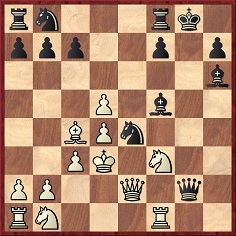
18 Qxg2+ Ng3 mate.
It is unclear whether Black was Arnold E. van Foreest (1863-1954) or Dirk van Foreest (1862-1956). Lodewijk Prins (Heemstede, the Netherlands), the author of Een Hulde aan Jhr. Dr. Dirk van Foreest (Lochem, 1945), tells us:
‘In their early twenties they were renowned for spending days and nights playing chess within their circle of friends. Dirk was a paragon of solidity, whereas Arnold cultivated the coffee-house style. I feel that Arnold probably played the game in question, but how the Brooklyn Chess Chronicle got hold of it puzzles me.’
(2070)
A position that deserves more than a casual glance:
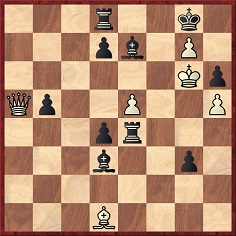
White, to move, announced mate.
The position arose in a game played in 1874 in Dorpat (present-day name: Tartu) between unnamed opponents. The forced mate is 1 Bb3+ Bc4 2 Bxc4+ d5 3 Qxd8+ Bxd8 4 Bxd5. If 1…d5, White plays 2 Qxd8+ Bxd8 3 Bxd5 mate.
However, it is the third possibility which presents the table-turning tableau: 1 Bb3+ d5
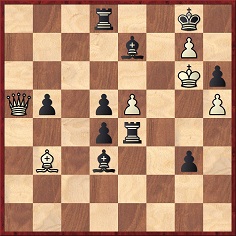
2 exd6+ Re6 mate.
Unfortunately the confusing German text in our source (Baltische Schachblätter, Heft 11, 1908, page 54) does not make it sufficiently clear how the game ended. The magazine credited the position to the Düna-Zeitung, but it remains to be discovered whether that publication had been more explicit.
Below, for reference, is the full text from the Baltische Schachblätter:
‘In einer von F. Amelung notierten Endstellung, die einer in Dorpat im Jahre 1874 gespielten Partie entstammt, hatte Weiss seinem Gegner Schwarz das Mat angekündigt. Nach dem Zuge 1 Ld1-b3+ war Schwarz bei d7-d5 schon in 3 Zügen und bei Ld3-c4 in 4 Zügen matgesetzt.
Zur Überraschung der Zuschauenden ergab sich aber, als die Partie von zwei Amateuren in der Diagrammstellung durchgeführt wurde, noch ein ganz anderes drittes Resultat. Weiss zog nämlich 1 Lb3+ und Schwarz antwortete darauf mit d7-d5. Als dann Weiss 2 exd6+ gezogen hatte, da folgte der Matzug – jetzt aber hatte Schwarz merkwürdigerweise matgesetzt. Tableau!
Die Lösungen obiger drei Fälle werden unseren Schachfreunden wohl nicht viel Kopfzerbrechen machen.’
(3127)
The only addition currently available is that the position had been published on page 79 of the May 1906 Schweizerische Schachzeitung:
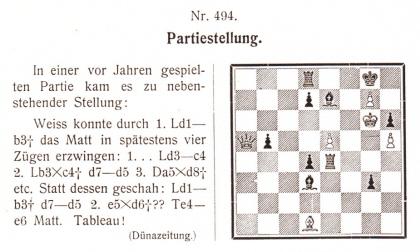
(7995)
Christian Sánchez (Rosario, Argentina) has found the ‘tableau’ position on page 63 of the 25 February (old style) 1906 issue of Düna-Zeitung:
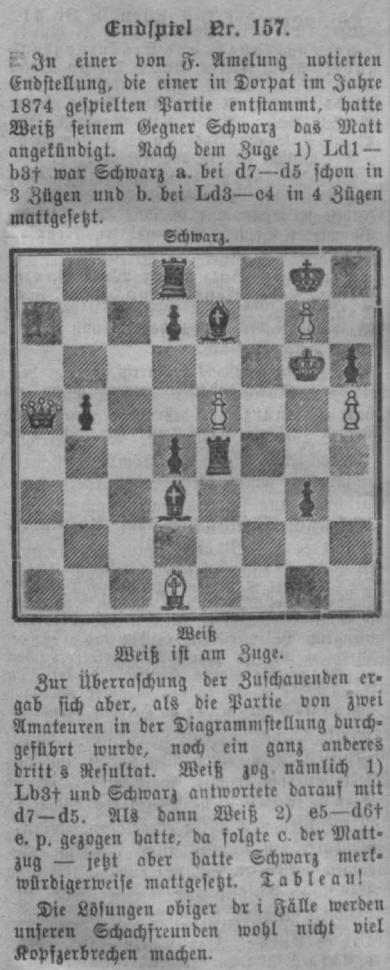
(7998)
An example found in Megabase 2005 (B. Templier v T. Liard, Montigny le Bretonneux, 2003):
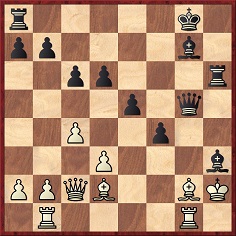
27 Bd5+ Be6 mate.
(4130)
Current databases yield hundreds of games with the check/checkmate motif, the oldest in Megabase 2021 being this loss by C.F. Jaenisch to I.S. Shumov:
1 e4 c5 2 d4 cxd4 3 Qxd4 Nc6 4 Qd1 e6 5 Nc3 Bc5 6 Nf3 Nge7 7 Bc4 O-O 8 O-O a6 9 Bf4 b5 10 Bb3 d6 11 Qd3 f5 12 exf5 Rxf5 13 Bg5 d5 14 Rad1 Qf8 15 Be3 Bd6 16 Ng5 h6 17 Nf3 Rxf3 18 gxf3 Ne5 19 Qe2 Nxf3+ 20 Kh1 Bxh2 21 Nxd5 exd5 22 Rxd5 Be6 23 Rxb5 Bxb3 24 Rxb3 Qf5 25 Bxh6 Qh3 26 Qc4+ Kh8 27 Bxg7+ Kxg7
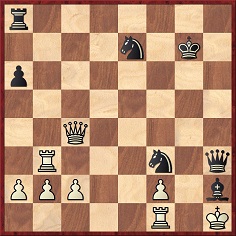
28 Qd4+ Be5 mate.
The database gives no venue and only a year: 1850. We note, though, that the game was the last of several between Jaenisch and Shumov published on pages 37-39 of the January 1850 Deutsche Schachzeitung. Although no venue was stipulated, other issues of the magazine from that period stated that both players lived in St Petersburg.
The above-mentioned pages are shown here courtesy of the Cleveland Public Library:

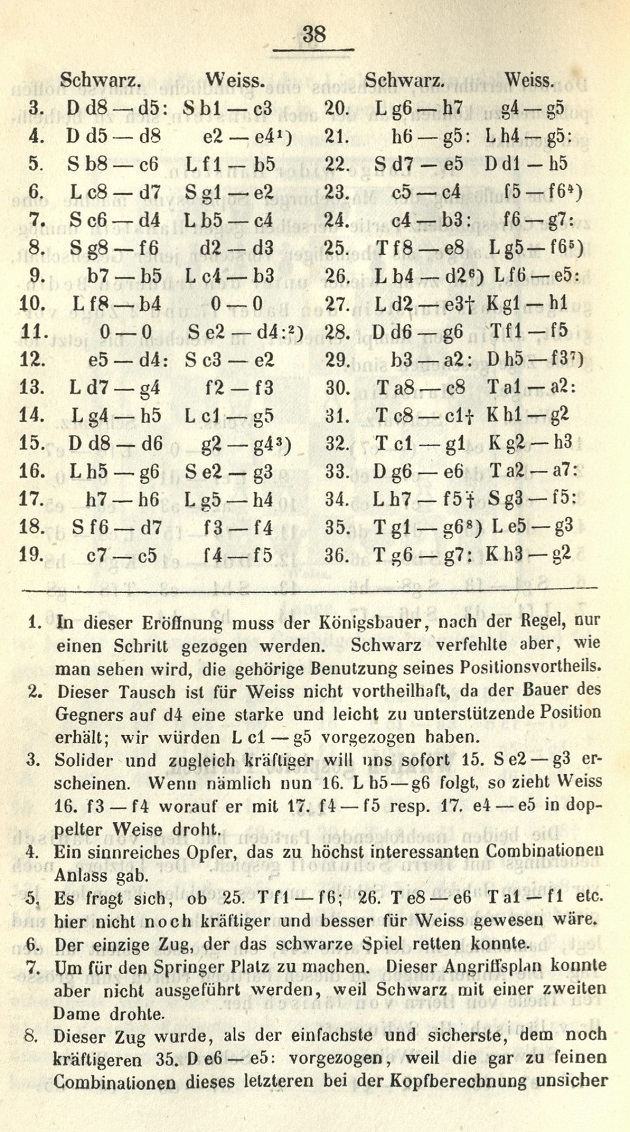
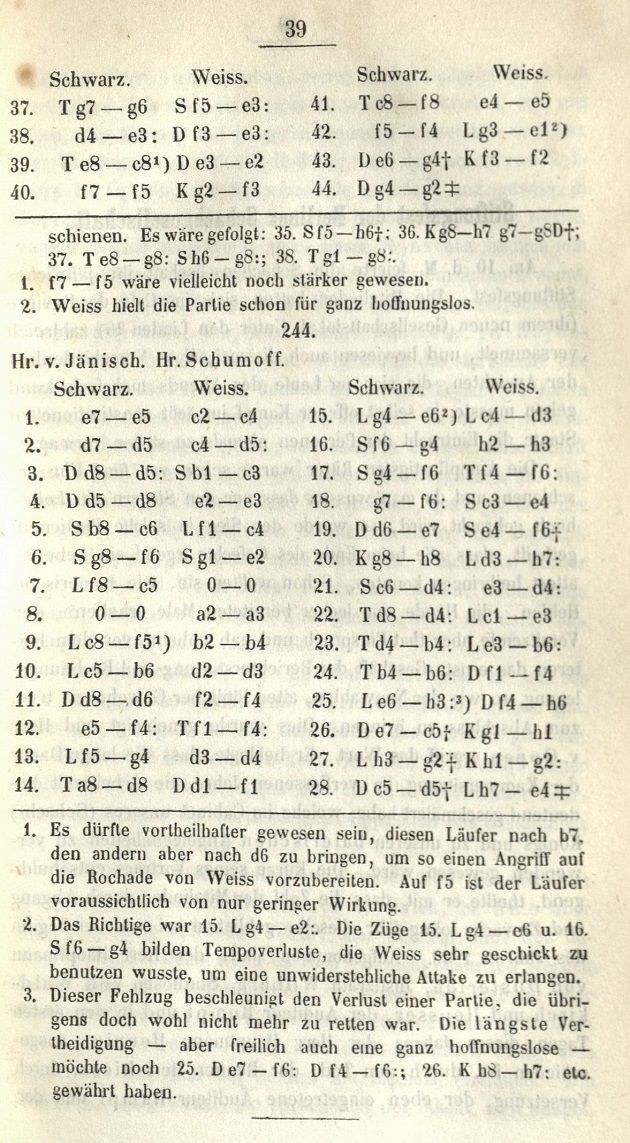
Christian Sánchez adds the following:
Reina – Thimm
Mexico City, circa 1884
Bishop’s Opening
1 e4 e5 2 Bc4 Nf6 3 d3 Bc5 4 Nf3 d6 5 O-O O-O 6 c3 c6 7 Bb3 Bg4 8 Be3 Na6 9 Nbd2 d5 10 h3 Bh5 11 g4 Nxg4 12 hxg4 Bxg4 13 Kg2 d4 14 cxd4 exd4 15 Bf4 Qf6 16 Kg3 h5 17 Rh1 Rfe8 18 Qg1 Nb4 19 Qf1 Kh7 20 a3 Nd5 21 exd5 Qxf4+ 22 Kxf4 Bd6+ 23 Kg5 f6+ 24 Kh4 Bf4 25 Ne4 Rxe4 26 dxe4 g5+
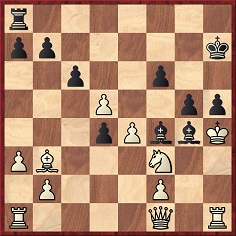
27 Nxg5+ fxg5 mate.
See pages 137-138 of the Brooklyn Chess Chronicle, 15 June 1884 and pages 118-119 of Kings, Commoners and Knaves.
Also:
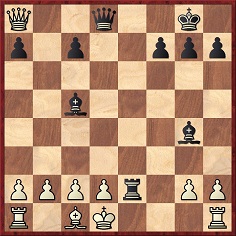
Amateur – Winkelman, Philadelphia, 1945
14 Qxd8+ Re8 mate.
The full game was given on page 99 of 1000 Best Short Games of Chess by I. Chernev (New York, 1955), and further details will be welcomed.
(4135)
To the Archives for other feature articles.
Copyright Edward Winter. All rights reserved.